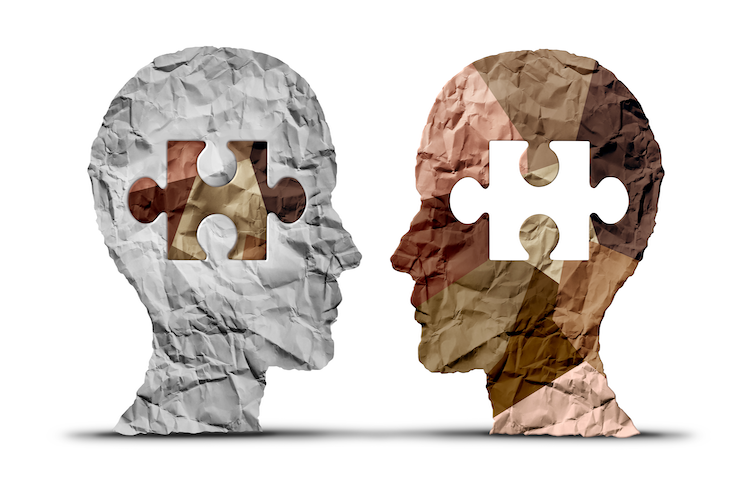Last year, during Halloween, I went to a costume party and saw a group of girls all dressed in traditional Native American clothing, even cutting the costume so it was shorter and “cuter”. I thought to myself, “that is definitely cultural appropriation,” but they didn’t seem to know or care; nobody pointed it out to them, either.
Cultural appropriation is when you steal from a culture that’s not yours because you find it funny, aesthetically pleasing, or cool. For whatever reason you do it, it’s a tasteless move.
Cultural appropriation is everywhere; from Halloween costumes to football team names such as the Cleveland Indians, the Washington Redskins (recently these names have been changed), or the Florida State Seminoles.
People often confuse cultural appropriation with appreciation and think it’s okay, but these two ideas are totally different. Telling the difference between cultural appropriation and appreciation is essential because you should never commit cultural appropriation. It makes you a jerk, and harms other people. Even if you think it’s just a joke, cultural appropriation makes you an ignorant idiot.
How is cultural appropriation harmful?
Cultural appropriation promotes stereotypes, which exploits the culture that is appropriated. As the nonprofit organization Native Governance Center says, “When a practice is appropriated, we no longer understand its origins and true intent.”
Not only does cultural appropriation confuse those from marginalized communities who want to know more about their culture, it can also damage the self-esteem of members of the culture in question. Stephanie Fryberg, PhD, a professor of psychology at the University of Michigan, has conducted research showing that sports mascots that culturally appropriate Native American symbols “decreased Native American teens’ self-esteem, lowered the achievement-related goals they set for themselves, and diminished both their sense of community worth and belief that their community can improve itself.”
What are some examples of cultural appropriation?
Aside from examples previously mentioned, other instances of cultural appropriation include:
- People wearing a bindi, colored dots that are worn on the forehead of Hindu, Jain, Buddhist, and Sikh women from the Indian subcontinent, for the “aesthetic”.
- Non-Black people wearing dreadlocks, a hairstyle associated with African cultures. This is something a lot of people do, but just know that dreadlocks were made for the hair-texture of Black people, so if you wear them you’ll be losing hair real soon.
- Copying another culture’s iconography, such as Polynesian tribal tattoos, for personal use.
- Dressing up as another culture in a derogatory way, such as wearing war headdresses of Native American tribes for Halloween.
- Modifying one’s body to “look like another culture”, such as non-Asian people taping their eyes/photoshopping their eyes into monolid eyes to make them look smaller for the “Asian feel”.
What is cultural appreciation?
Cultural appreciation is appreciating another culture and connecting with others cross-culturally. You can do this in many ways, such as purchasing and promoting cultural art made by someone of said culture.
What’s the difference?
Many often confuse cultural appreciation and appropriation, but it’s actually really easy to tell if you just ask yourself these questions:
- Are you using “credit” as a justification? Many people often mistake giving credit as a ticket to get away with anything, but that’s not true. If it’s offensive, it’s offensive. Credit doesn’t help.
- Are you aware of what you’re doing? Sometimes, people do offensive things without even realizing it. This may be a reflection of their internalized racism or racial stereotypes. Being aware of your actions is very important.
- Are you honoring or imitating? What is your attitude? Is it praising and honoring, or imitating and insulting?
- Do you understand the culture? Understanding is a basic thing. By understanding a culture, you are able to educate those around you about said culture and spread awareness as well as information. If you don’t understand the culture, and you don’t want to, it’s appropriation.
- Why are you doing this? Intention matters. Are you doing it because “it’s funny”, or are you doing it because you want to honor it?
- Is the culture you’re “appreciating” offended? This is perhaps the most important fact: only those who are “appropriated/appreciated” have a say in the final decision. Nobody else gets to decide whether someone is appropriating or appreciating the culture. If people from said culture say it’s appropriation, then it’s appropriation. Same for vice versa.
–
Why is it important to know the difference? The answer is simple: as mentioned, cultural appropriation is truly harmful to minority cultures. People that culturally appropriate different cultures sometimes don’t realize the harm they’re causing, but that doesn’t take away its severity.
If someone does realize what they’re doing, but continues anyway, call them out.
If you see someone who is offensively appropriating another culture and doesn’t realize what they’re doing, you could give them a gentle reminder. Usually, that is enough for someone to see their actions and hopefully change for the better.





0 Comments